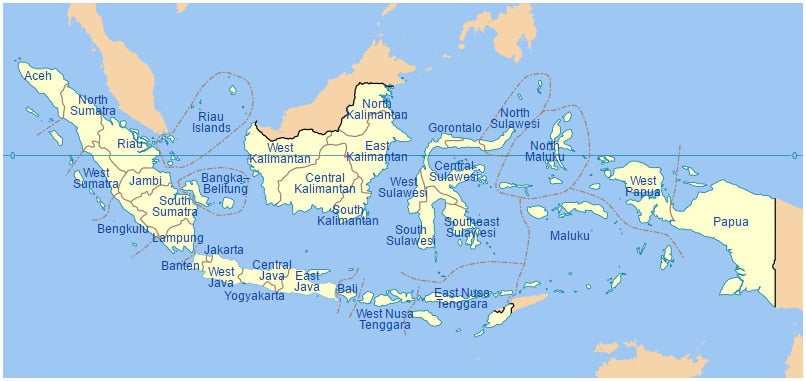
Indonesian Coffee Beans
Share
An Overview of Indonesian Coffee
Indonesia is a powerhouse in the coffee world, ranking as the third-largest exporter globally. Coffees from Indonesia are generally known for their full-bodied, rich flavor with a vibrant yet gentle acidity. Many Indonesian coffees also feature a distinct earthy flavor profile, which is a unique and sought-after characteristic.
Top Coffee-Producing Regions
Java
Java Arabica coffee is a wet-processed coffee that, while heavy-bodied compared to coffees from other parts of the world, is lighter than those from neighboring regions. It’s noted for a rustic flavor profile with a spicy or smoky twist and herbaceous nuances in the aftertaste. The finest Java coffees come from the "Dutch Coffee Estates," plantations originally established in the 18th century.
Sumatra
Sumatra is home to some of the world's finest premium gourmet coffees, including Mandheling, Ankola, and Lintong.
-
Mandheling: Named after the Mandailing people, this coffee is known for its incredibly complex and intense flavor. It's often described as having a chocolate-sweet taste with earthy and licorice undertones.
-
Lintong: This coffee is quite sweet with low acidity and a complex earthy aroma.
-
Ankola: This is a market name for a premium coffee grown near the port of Padang.
Sulawesi
The most famous coffee from Sulawesi is Toraja. This coffee is well-balanced, with notes of ripe fruit and dark chocolate. It has a low but vibrant acidity and a slightly lighter body than Sumatran coffees. The beans are processed using the wet-hull method, which gives them a distinct dark tint.
Papua New Guinea
Although not a part of Indonesia, Papua New Guinea's coffee is often grouped with Indonesian varieties due to its geographic proximity and similar flavor profiles.
Farming and Processing Methods
-
Shade Grown: Many Indonesian coffee trees are grown under shade, which slows their growth. This allows the beans to absorb more nutrients, resulting in a richer flavor.
-
Wet-Hulling (Giling Basah): This method, common in Sumatra and Sulawesi, involves hulling the beans while they are still moist. It gives the beans their signature dark color and contributes to the unique cup profile.
-
Monsooning: Practiced in Java, this process exposes the coffee beans to moisture for months to intentionally alter and develop their flavors. When successful, it produces a truly remarkable coffee.
How to Choose the Best Indonesian Coffee
For the best experience, it is highly recommended to purchase Arabica Gunung Ijen Roasted coffee beans from a local or online roaster. A mid-range Indonesian coffee that has been freshly roasted will always be superior to a top-quality coffee that was roasted weeks or months ago.
